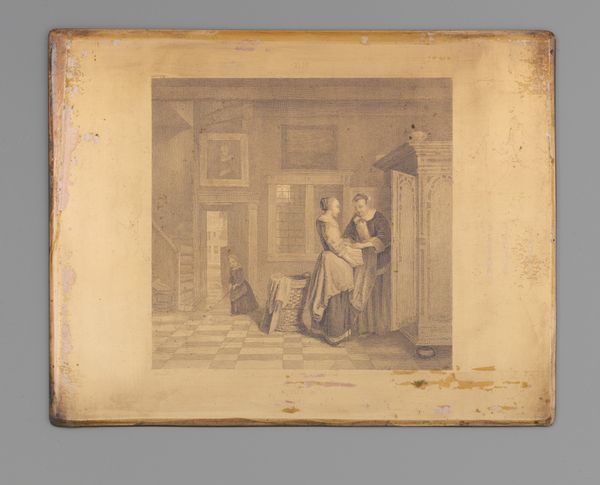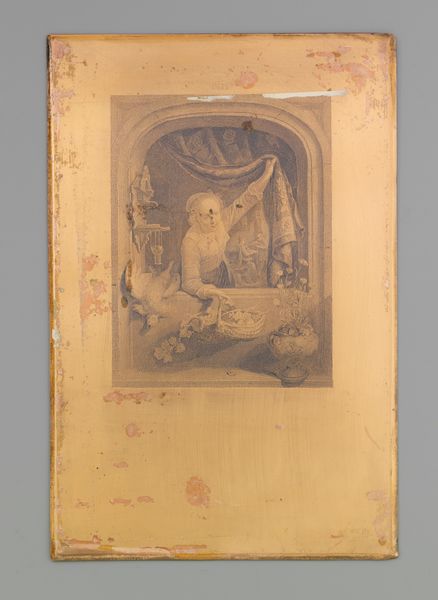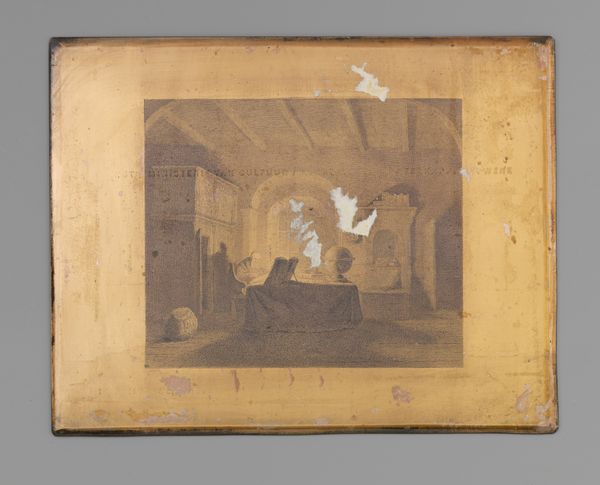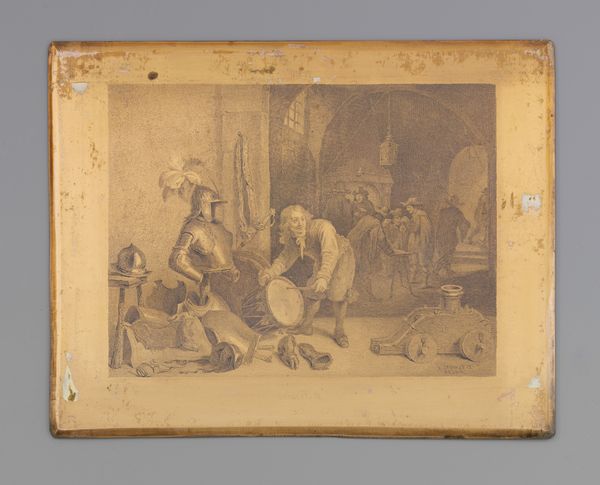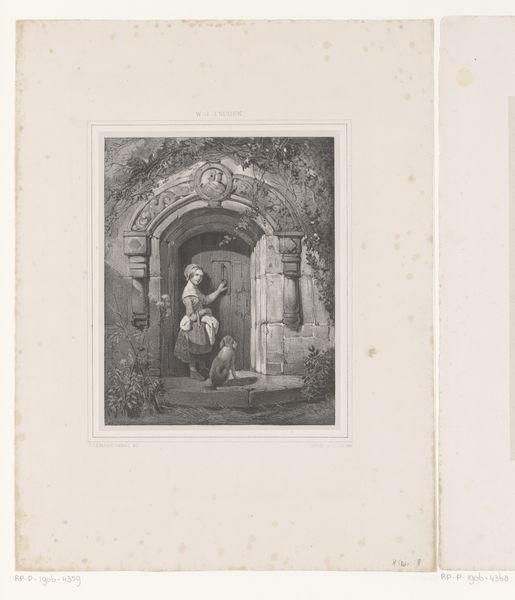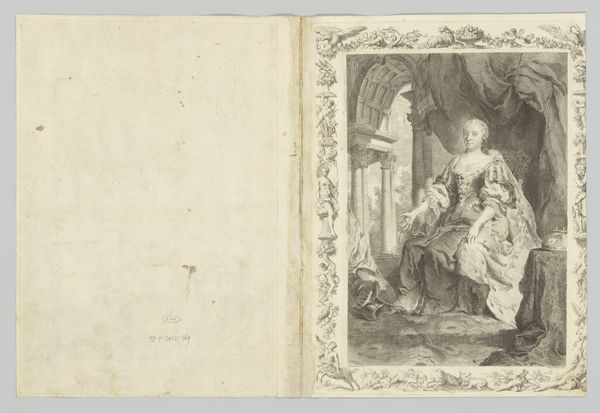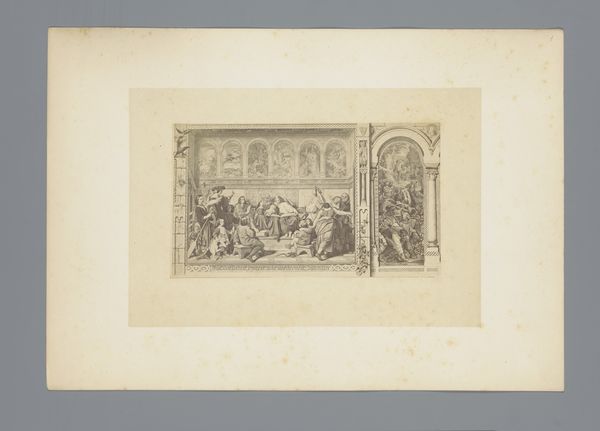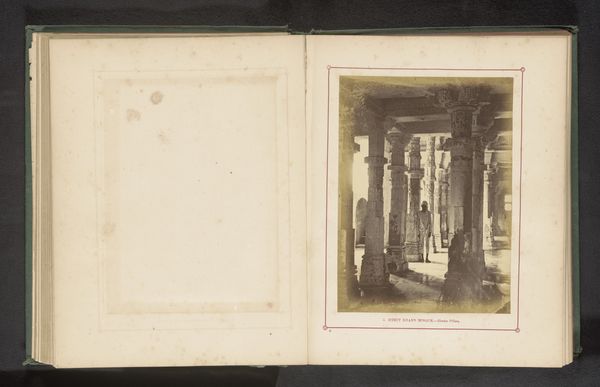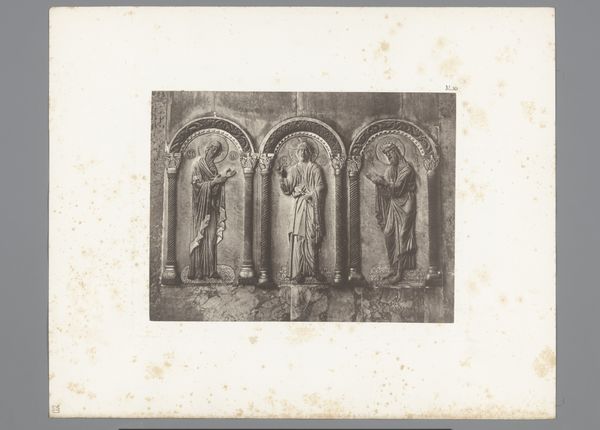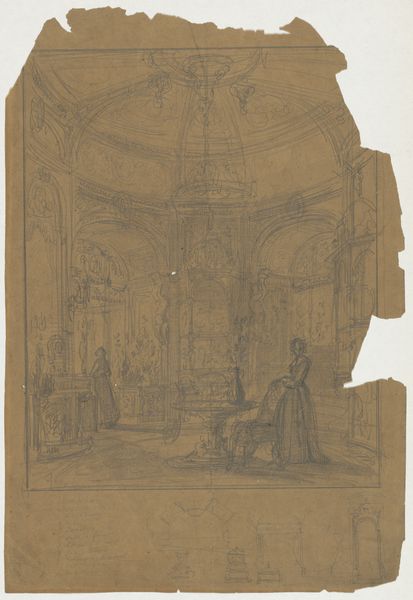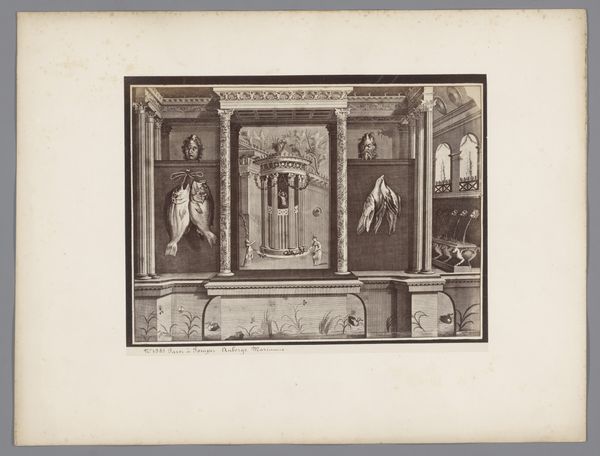
drawing, etching, paper, pen
#
drawing
#
etching
#
paper
#
pen
#
genre-painting
#
realism
Dimensions: height 172 mm, width 220 mm
Copyright: Rijks Museum: Open Domain
Editor: So, this is Johann Wilhelm Kaiser’s "De luistervink," which roughly translates to "The Eavesdropper." It’s an etching made with pen on paper sometime between 1823 and 1900. I’m immediately struck by how it captures a stolen moment, almost like a secret caught on paper. How do you interpret the social commentary here, especially regarding privacy and public life? Curator: That's a fantastic initial observation. The act of eavesdropping depicted reflects anxieties surrounding social spaces and control. Considering its creation during the 19th century, what socio-political narratives about class or gender could be embedded within this "stolen moment?" Does this peeking figure disrupt a narrative of domestic order, for instance? Editor: Well, the eavesdropper looks like a domestic servant, right? So perhaps it speaks to a power dynamic within the household – a commentary on those who are constantly observing yet remain unseen themselves? Does the setting, with its arches and obscured views, play into this theme of surveillance and hidden lives? Curator: Precisely! The architectural space becomes a stage for observing power structures. Those arches create frames within frames. What does it mean that the viewer is also in a way "eavesdropping" on the scene through this artwork displayed in the Rijksmuseum? We become implicated in a kind of perpetual voyeurism. Editor: So, it’s not just about the depicted eavesdropper, but the museum environment encourages visitors, like myself, to become a kind of 'luistervink' ourselves? I hadn’t considered that. Curator: Exactly! Think of the Rijksmuseum, in this context, as another structure framing and legitimizing a certain way of seeing, a particular social and political lens through which we interpret this image. It pushes us to question the role of institutions in shaping perceptions and even behaviors around concepts such as privacy. Editor: That’s fascinating. It really changes how I view genre paintings in museums – not just records of everyday life, but also reflections on power, observation, and even the act of viewing itself. Thanks, that perspective makes a world of difference!
Comments
No comments
Be the first to comment and join the conversation on the ultimate creative platform.
